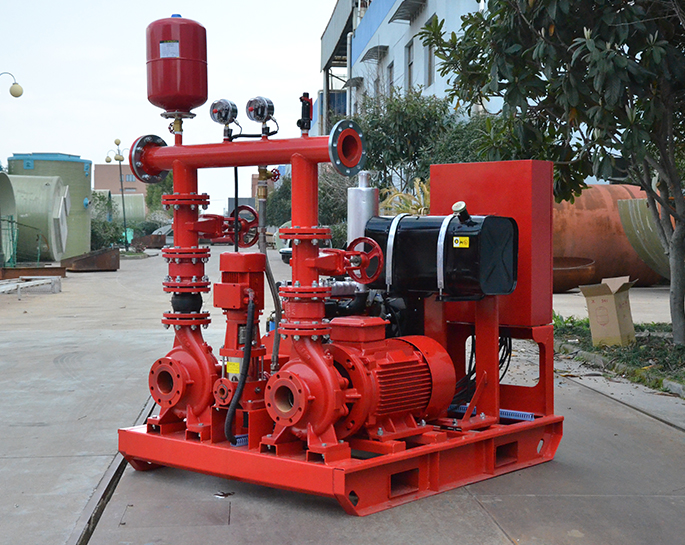Details of fire pump design
May 12, 2023
Share:
Fire pumps are an essential part of any fire safety system and must be designed correctly to ensure they are effective. Fire pump design involves a number of considerations in order to ensure the pump is reliable and able to provide the required fire protection. In this article, we will discuss the details of fire pump design.
The first step in the design process is to determine the flow and pressure requirements of the fire pump. This information is often obtained from the fire protection engineer and is based on the size and type of the building, along with the fire protection requirements. The flow and pressure requirements will determine the size and type of the fire pump that is needed.
The next step is to select the type of fire pump for the application. There are several types of fire pumps available, such as electric, diesel, and gas. Each type of fire pump has different characteristics that must be considered in order to ensure the pump is reliable and able to provide the required fire protection.
The third step is to select the pump components. This includes the pump, motor, and other accessories. The components must be compatible with each other and must be able to provide the required flow and pressure. The pump must also be able to withstand the environment in which it will be used.
The fourth step is to install the fire pump. This involves connecting the pump to the necessary piping and wiring. It is important to ensure that the pump is installed correctly in order to ensure it is reliable and able to provide the required fire protection.
The fifth and final step is to test the fire pump. This is often done with a test pump that is used to simulate the flow and pressure requirements of the fire pump. The test pump is used to make sure the pump is working correctly and is able to provide the required fire protection.
Fire pump design is a complex process that requires careful consideration and planning. It is important to ensure the fire pump is designed correctly in order to ensure it is reliable and able to provide the required fire protection. By following the steps outlined above, designers can ensure the fire pump will be effective and reliable.

The first step in the design process is to determine the flow and pressure requirements of the fire pump. This information is often obtained from the fire protection engineer and is based on the size and type of the building, along with the fire protection requirements. The flow and pressure requirements will determine the size and type of the fire pump that is needed.
The next step is to select the type of fire pump for the application. There are several types of fire pumps available, such as electric, diesel, and gas. Each type of fire pump has different characteristics that must be considered in order to ensure the pump is reliable and able to provide the required fire protection.
The third step is to select the pump components. This includes the pump, motor, and other accessories. The components must be compatible with each other and must be able to provide the required flow and pressure. The pump must also be able to withstand the environment in which it will be used.
The fourth step is to install the fire pump. This involves connecting the pump to the necessary piping and wiring. It is important to ensure that the pump is installed correctly in order to ensure it is reliable and able to provide the required fire protection.
The fifth and final step is to test the fire pump. This is often done with a test pump that is used to simulate the flow and pressure requirements of the fire pump. The test pump is used to make sure the pump is working correctly and is able to provide the required fire protection.
Fire pump design is a complex process that requires careful consideration and planning. It is important to ensure the fire pump is designed correctly in order to ensure it is reliable and able to provide the required fire protection. By following the steps outlined above, designers can ensure the fire pump will be effective and reliable.







